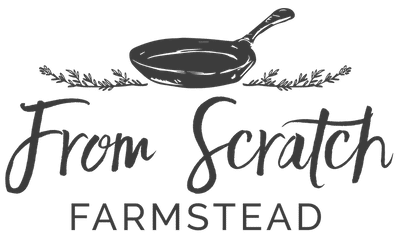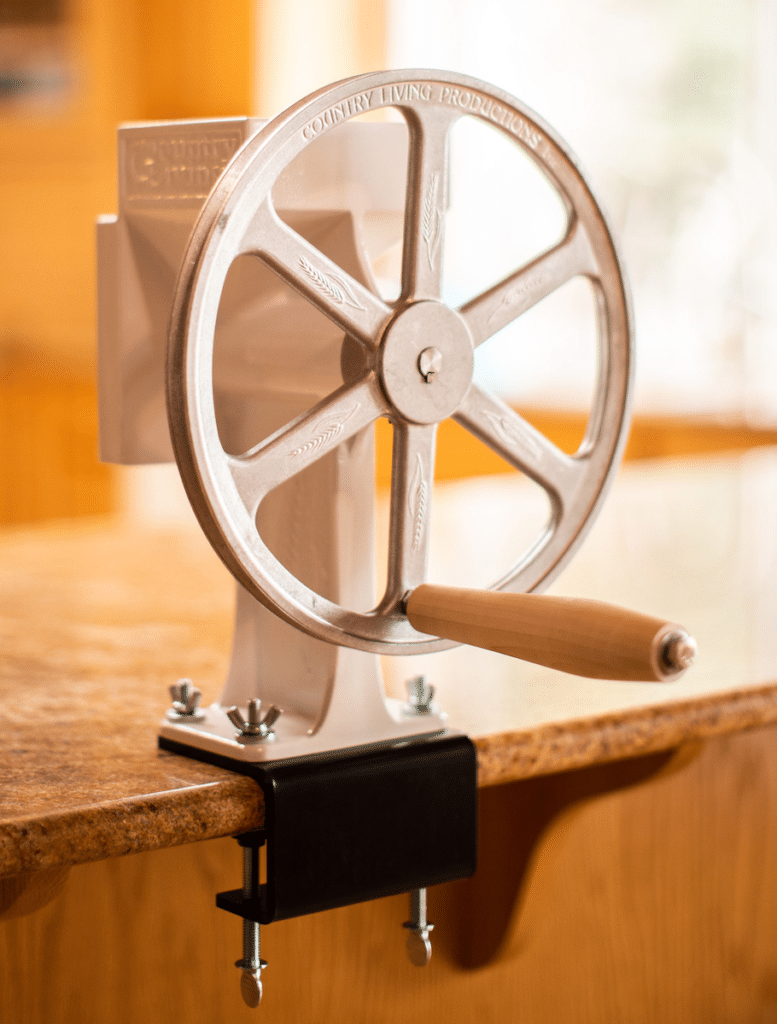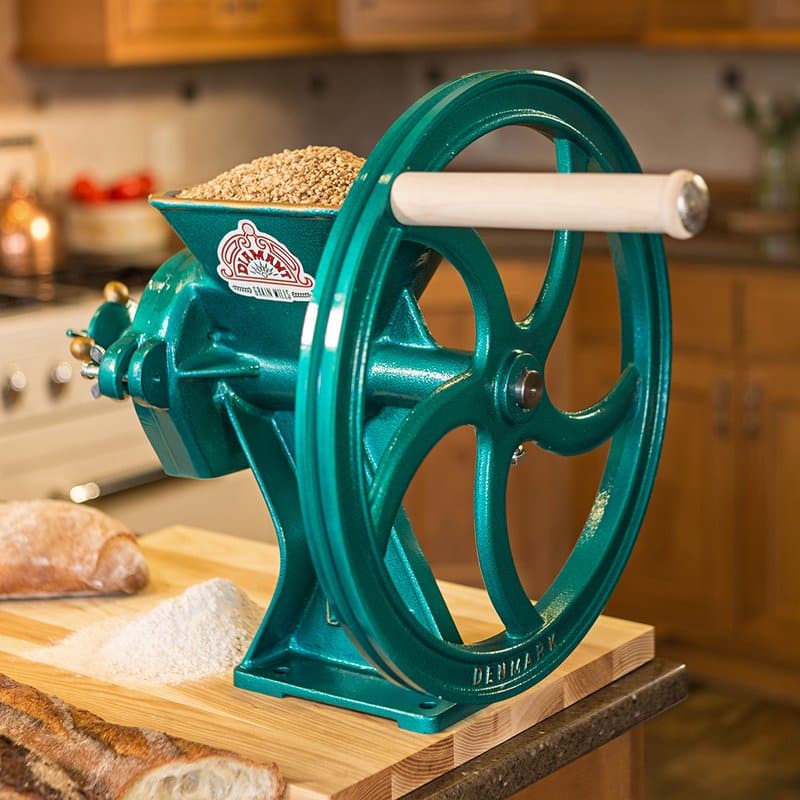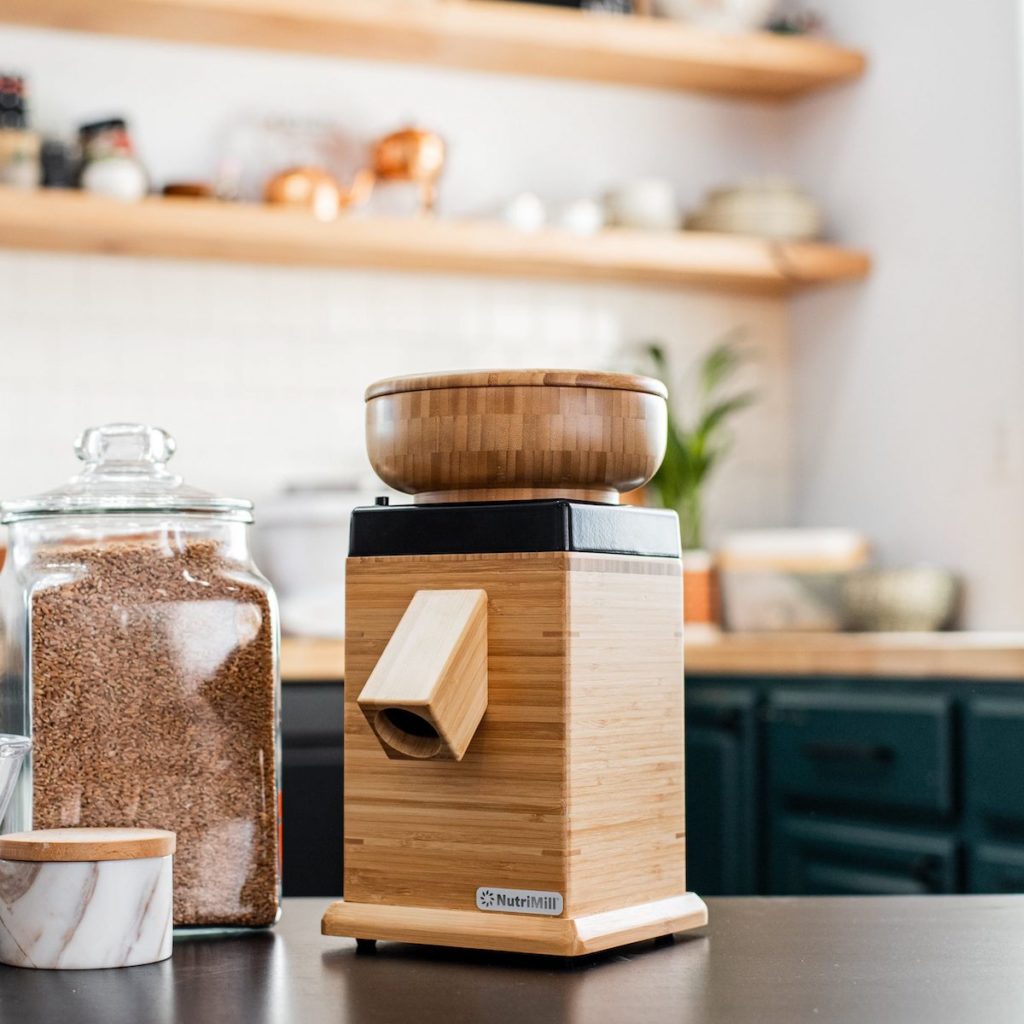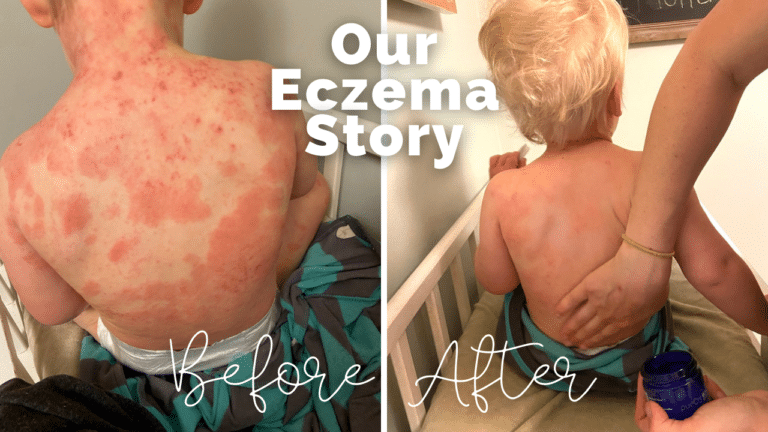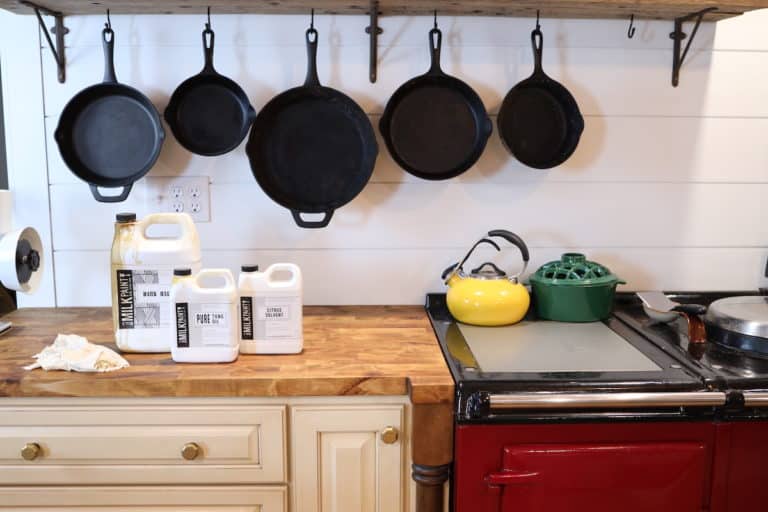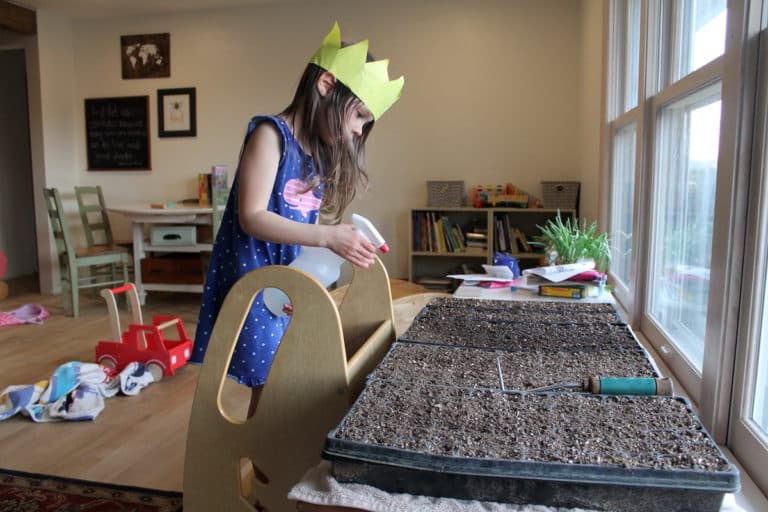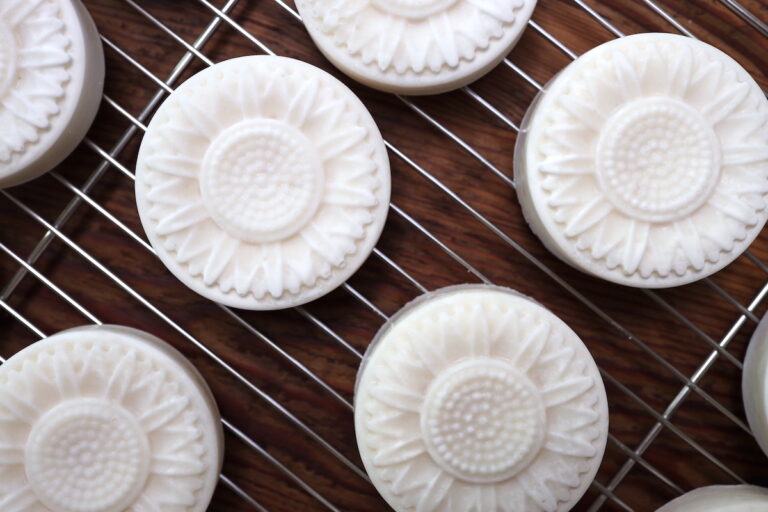How to Make Flour | Using A Hand Grain Mill At Home
Fresh ground flours not only taste better, but they pack in so much more nutrition than the store-bought alternative. We have been milling grains by hand for several years and will walk you through how to make flour from wheat and other grains in your own kitchen.
It’s so simple so let’s get started!
Our Transition from Grain Free Eating
When our health journey began over a decade ago there were a lot of foods that simply didn’t make the cut. Our pantry got a major overhaul. Processed foods out. Whole and nutrient dense foods in.
It was a tough one to swallow, but grains got the boot.
As we were trying to resolve some imbalances and health issues, it was best to completely remove all grains and particularly gluten containing grains for a time.

Over time, through changes in our diet and lifestyle, our health began to improve and issues were resolving. At that point, we began considering adding grains back in and began asking questions about why grains are linked to so many negative health outcomes.
What if the problem didn’t lie in the wheat itself?
What if it had more to do with how wheat was being processed in our modern industrial systems?
The more we learned the more that proved to be the case.
Most grains in their whole form actually offer a robust nutritional profile. But the high heat of industrial grain mills diminishes that nutritional value. Additionally, scientists discovered that removing the germ and bran from wheat (the most nutrient dense parts) preserves flour much longer on grocery store shelves. This has left us with the nearly nutrition-less white flours still lining our grocery store shelves today.
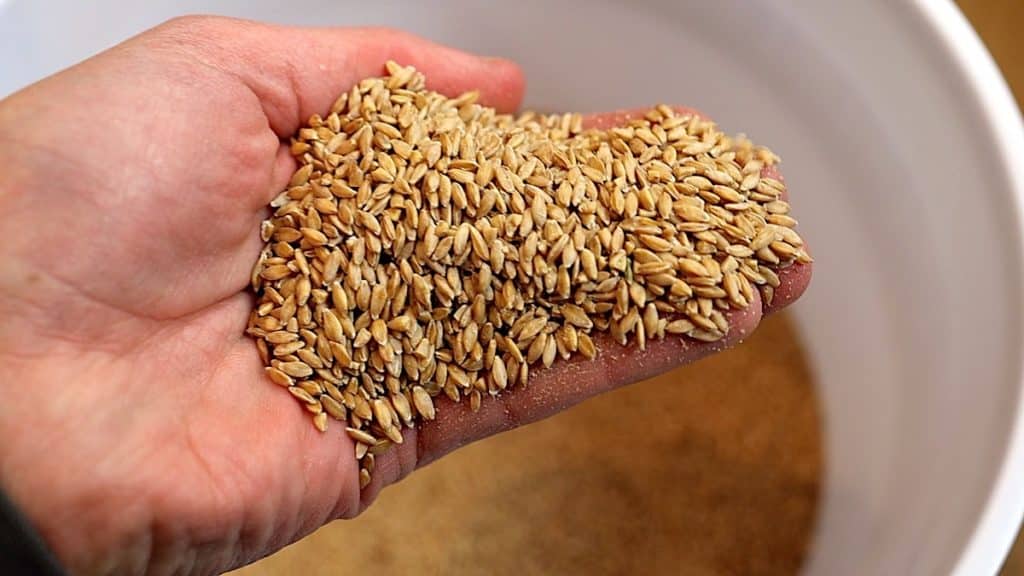
The health impacts got so bad that the government recommends nutrients be added back to these industrially produced flours. Makes a lot of sense, doesn’t it? Remove all the naturally occurring nutrients from wheat and then add a synthetic replacement back in.
So, after learning more of the benefits of wheat in its natural form, we started buying wheat berries (the whole kernel form of wheat), purchased a small hand crank mill, began making our own flour, and modestly began incorporating grains back into our diet.
How To Make Flour at Home – The Benefits
Wheat, and other ancient grains like einkorn and spelt, are remarkable food sources that our ancestors survived and thrived on for thousands of years. In whole form or when turned into freshly ground flour, they have so many benefits.
Nutrition
Wheat berries contain over 30 naturally occurring nutrients including vitamins and minerals. They are an excellent source of fiber, protein, carotene, calcium, phosphorus, and iron. Many home mills spin at a low RPM. This keeps the temperatures low enough to preserve the nutrients these grains have in their whole form.
Bulk
Once grains are milled and broken down from their whole form, they are no longer shelf stable and can quickly go rancid. Wheat berries and other whole kernel grains can remain viable for years. That is why having your own mill allows you to stock up on wheat berries and other grains to be able to store large quantities of grain and turn them into food whenever you need it.

Cost
Industrially grown and milled grains are cheap for a reason. Quality and cost have a direct relationship. But milling your own grains at home is a great way to reduce cost! Small to mid-scale milling operations that care about the quality of the finished product comes at a cost. It’s not uncommon for these milling operations to charge double for an already ground flour than what they charge for the whole kernel grain. Yes, purchasing a hand mill is an investment in both money and time. But you can save a lot of money in the long run buying unmilled grains from quality sources.
Freshness
Hands down, nothing beats the freshness of just milled flour. The taste. The aroma. You’ll experience the full nutty and hearty flavors these grains offer. Hand milling especially causes you to slow down and feel intimately connected to your food. It’s a culinary experience unlike any other that allows you to fully appreciate the superior taste and nutrition that grains can offer at their peak freshness.
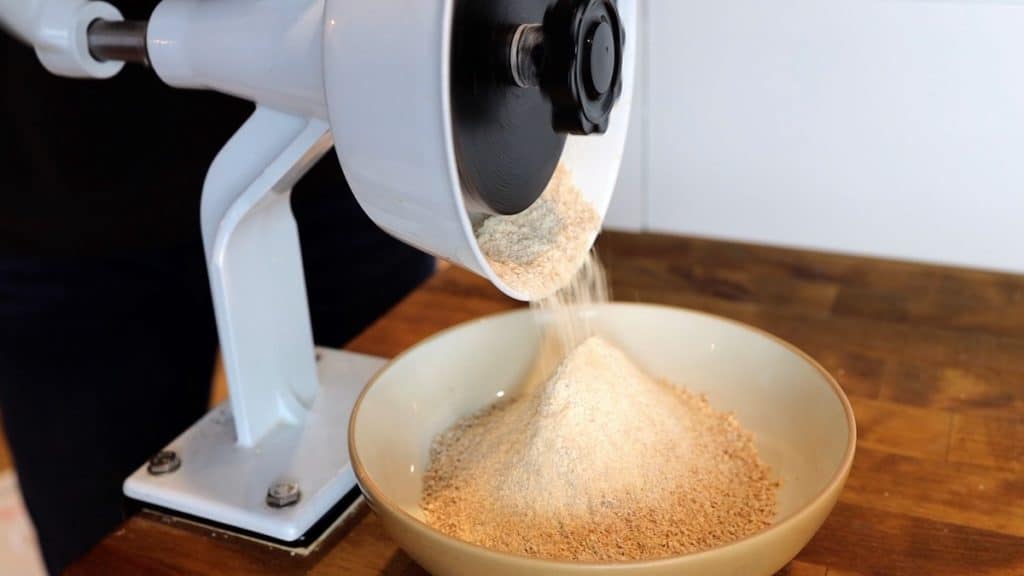
Hand Grain Mill Options for Making Flour at Home
Many hand grain mill options exist in the market. After researching them, we ended up going with the WonderMill Junior Deluxe.
WonderMill Junior Deluxe
After owning our WonderMill Junior Deluxe for about 6 years, we have been thoroughly satisfied with our purchase. It’s a bare bones hand crank mill that is built well and offers a lot of versatility.
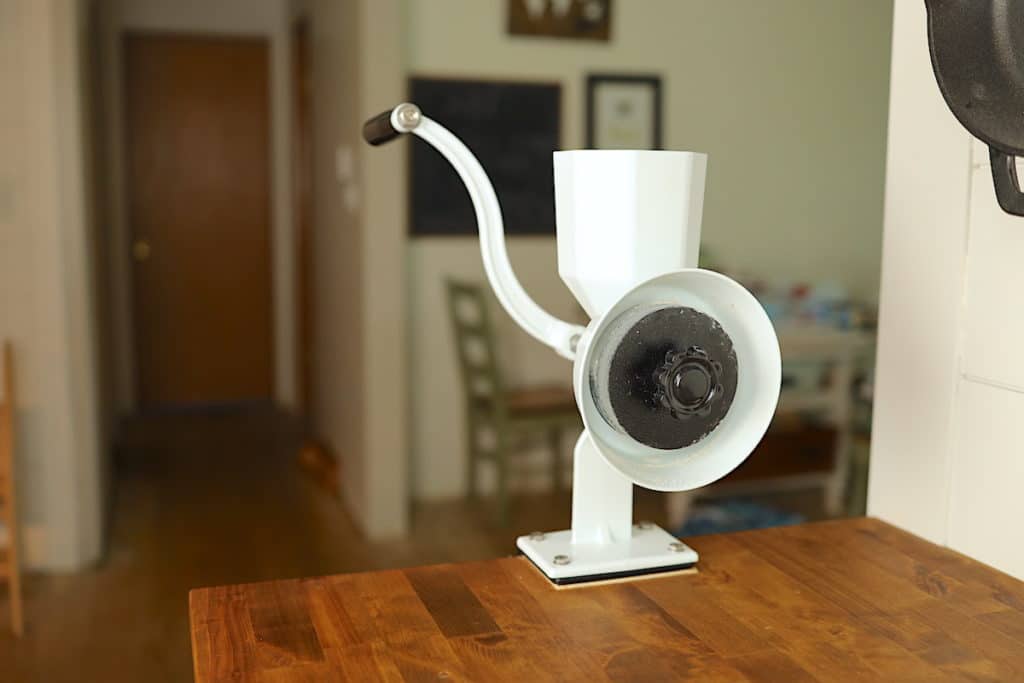
In addition to the stone milling plates for milling dry grains, it also comes with metal burr plates for wet grinding. This works for tasks like turning nuts into nut butters or nixtamalized corn into masa.
We will admit that the milling process is a workout! We do a once-a-month batch sourdough session where we use some 15-20 cups of flour at once. After an hour or so of grinding wheat for that quantity, your arms are feeling ripped!
The WonderMill Junior produces fine flours in just one pass. We’ve used it with hard wheat, soft wheat, rye, einkorn, corn for turning into cornmeal – and will definitely be trying other grains in the future.
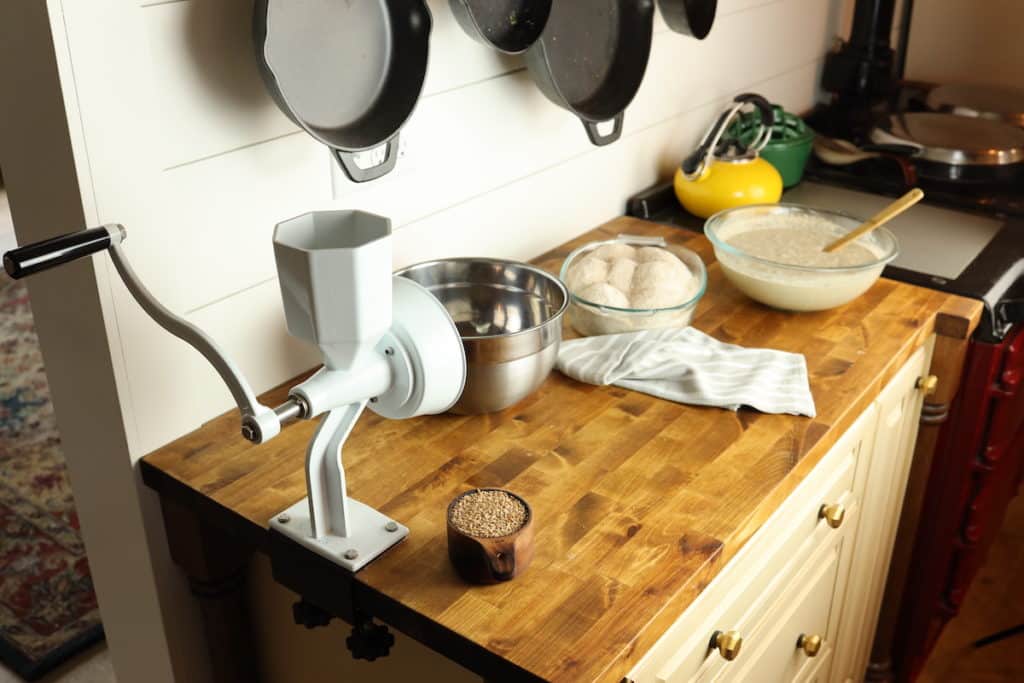
The mill clamps nicely to our countertop, is compact enough to leave out all the time, and adds a nice farmhouse feel to your space.
My only disappointment with the product is that it’s not made in the U.S.A.
Country Living Grain Mill
The Country Living Grain Mill has been a well-loved option in the home milling community for decades. It is made in the U.S.A. and offers similar build materials and quality to the WonderMill Junior with the addition of a flywheel for easier cranking. Also, like the WonderMill Junior, the Country Living Grain Mill offers separate grinding plates for making nut butters. However, they need to be purchased separately as an additional accessory. The clamp to fasten the grain mill to a countertop or table is also sold separately.
Diamant Grain Mill
With old world quality and cast iron construction, the European built Diamant Grain Mill is made to last. This mill also boasts a large flywheel and is said to be among the smoothest and easiest hand mills to operate. The Diamant Grain Mill will handle about any milling task without needing to swap out burrs or augers. A potential downside is its size and mounting. Its heavy duty construction makes it quite a bit bulkier and heavier than the previously mentioned mills that are made of aluminum. Instead of clamping to a surface, the Diamant mill bolts down, which may not be desirable in every kitchen.
Considerations When Buying a Hand Grain Mill
Ease of Use
The addition of a flywheel on some hand mills will create momentum making it easier to crank your mill by hand. The Wondermill Junior does not have a flywheel. It can take significant effort when grinding – especially when grinding cornmeal as we’ve discovered! Both the Country Living and Diamant grain mills have flywheels giving them the advantage for ease of use.
Two questions to ask yourself are:
- How often will I be grinding flour?
- How much flour will I be grinding at once?
If you plan to use your mill daily, or even weekly, you might consider one of the higher end hand mill options with a flywheel. We typically use our hand mill only a couple times a month, and have enjoyed using the WonderMill Junior. Even with its lack of flywheel it cranks out flour in an efficient manner.
Versatility
One of the big draws to the Wondermill Junior Deluxe for us was that it comes with everything you need upfront without needing to buy expensive accessories. This includes the stone grinding wheels and auger for dry grains along with the wet burr wheels and auger suited for nut butters and masa. The Country living grain mill offers similar versatility, but you need to buy the accessory package for nut butters.
Diamant states their mill is capable of grinding all grains, many spices, legumes, beans, nuts (except peanuts) and seeds without needing to change the burrs or auger.
Stone vs. Metal Grinding
The stones used for stoneground flour dissipate heat much quicker than other materials meaning nutritional value is not compromised in the process of making flours. Stoneground flour is also tied to many health benefits like higher digestibility along with lowered cholesterol and blood sugar levels.
The Wondermill Junior is the only hand mill we found that offers natural stone grinding wheels. Both the Country Living and Diamant mills have metal burr wheels for grinding. We have appreciated the consistently cool stoneground flours produced from our Wondermill Junior, even when grinding large quantities of flour all at once.

Cost
The three hand grain mills discussed in this post offer three different price points.
The WonderMill Junior Deluxe comes at a very entry-level price, in the $350-$400 range. The fact that everything is included in the box and no extra accessories are needed down the road is also a bonus. The Country Living mill sells for $529, while the Diamant mill sells for $999.
There are less expensive hand mills out there. From our research and experience of knowing the rigors these mills go through, we would not recommend them for a reliable and long-term home milling option.
Electric Drive Options
All three of the hand mills being discussed offer options to upgrade to an electric drive motor. The Country Living and Diamant mills are the easiest to convert as the included flywheel will accommodate a belt that can be pulled by an electric motor.
The WonderMill Junior offers a motorizing pulley accessory that can be connected to an electric motor. WonderMill also offers a drill bit attachment along with a bicycle sprocket conversion kit that can drive the mills shaft when chained to a stationary bike.
Alternative Options to Hand Grain Mills
There is so much we have appreciated about having a hand mill. The fact that it causes us to slow down and appreciate where our food comes from. The reality that our kids are growing up seeing the effort and energy it takes to turn food into an entirely different form. Plus, should we ever be without power, it’s reassuring to know we can still grind our supply of wheat, corn, and other dry storage crops by hand.
But, in our modern world and with a growing family, we have also considered investing in an electric mill in the not-so-distant future. The two most common options we’ve seen are the Nutrimill and MockMill.
Other options for milling flour at home include using a high-powered blender like a Vitamix (with dry blender), a food processor, or small quantities of flour can even be milled in a coffee grinder!
How To Make Flour At Home Using A Hand Mill (step by step)
Step 1 – Source your grains
Look for high quality grains. We always try to source locally grown, organic grains whenever possible. We live in the Midwest and our favorite sources for grains are Janie’s Mill and Meadowlark Organics. You can also look at your local health food store. If they don’t have what you’re looking for in the store, we’ve had luck talking to the manager and ordering grains in bulk through the store in the past.
Step 2 – Add grains to your mill
Pour whole wheat berries or other grains into the hopper at the top of the mill. The hopper on the WonderMill Junior holds about a quart of grains. One cup of wheat berries will typically produce around 1-1/2 to 2 cups of flour.
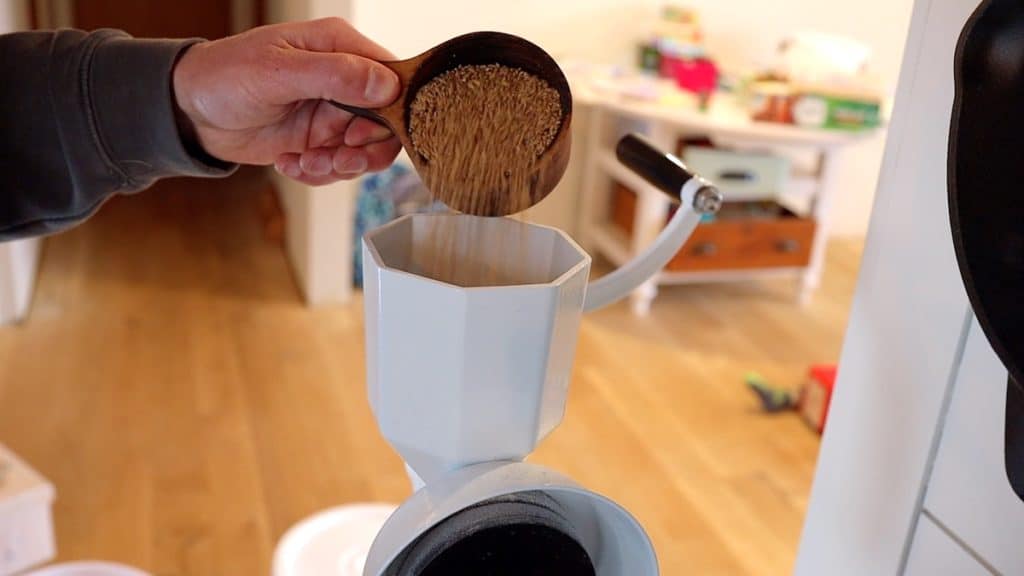
Step 3 – Mill your grains
Place a good-sized bowl below your mill to catch the flour. Then, begin cranking your mill clockwise manually by hand. Grind a small amount to check the coarseness. The adjustment knob will allow you grind finer by tightening the grinding wheels and coarser by loosening them.
When the hopper is nearly empty, you’ll feel the resistance reduce when cranking the handle and less flour will be produced. We often loosen the adjusting knob a bit and give it some final cranks to pass through the remaining wheat berries.
Step 4 – Use your flour
Making flour at home by hand is as simple as that! In the end you are left with the freshest and finest flours in the land.
Using fresh ground flour can be a different cooking or baking experience than store bought all-purpose flours.
For starters, fresh ground flour is less compacted meaning you may need to use additional flour than what a recipe calls for.
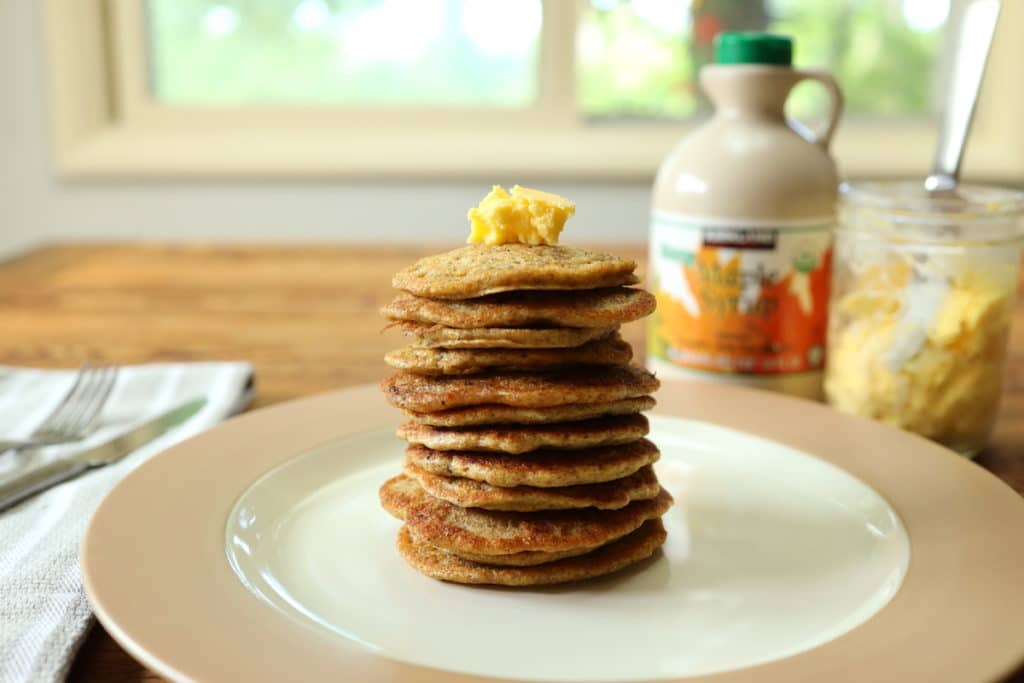
Grinding your own flour may also produce a denser result than you are used to. This is because the germ and bran have not been removed like they are in store bought flours that produce the light, airy texture many of us are accustomed to.
Step 5 – Store your flour and grains.
You will likely have some of your fresh ground flour leftover along with whole grains. Here are some tips for storing them:
How do I store freshly ground flour?
Fresh ground flour should either be used for cooking the day it is milled or stored in an airtight container in the fridge or freezer for longer-term storage. Home ground flour will stay fresh and preserve its nutritional value in the fridge for 2 weeks.
How do I store wheat berries?
Wheat berries should be stored in an airtight container in a cool, dry location. We store our wheat berries in food grade 5-gallon buckets in our basement. When properly stored in their whole form, wheat berries can maintain their freshness and nutritional value for years. Some say even decades!
Hand Milling Grains Lives On!
While there are high quality electric home grain mill options on the market these days a strong case can still be made for having a hand grain mill. Even if only to have a backup for when your electric mill inevitably fails!

Hand mills offer great versatility giving you options for both dry and wet grinding. They offer reliable food security in the event there is some catastrophic event that knocks out power for an extended period. And they teach us to appreciate our food on a slow and thoughtful level that connects us to our ancestral culinary heritage in ways that the convenience of electric mills can’t offer.
What are you considering or what’s been your experience? We’d love to have you weigh in on the hand grain mill conversation!
Some of the above links are affiliate links. This means we earn a small commission on qualifying purchases at no cost to you. We are so appreciative of your support!
Looking for more posts on sourdough?
- Deep Dish Sourdough Cast Iron Pizza
- Simple Sourdough Pancakes
- The Best Sourdough Scones
- Can You Freeze Sourdough Bread?
Pin it for later!

